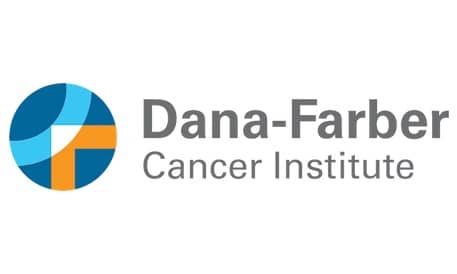This guide explains how neuropathy and neurological symptoms affect your well-being during and after cancer treatment, and what you can do to manage them. Topics covered:
- Overview of neurological symptoms, including common causes and symptoms (like CIPN)
- Top evidence-based practices and therapies to manage neuropathy and neurological symptoms
Neuropathy and neurological symptoms at a glance
Neurological symptoms such as chemotherapy-induced peripheral neuropathy (CIPN) can have substantial impacts on your quality of life and ability to complete cancer treatment. About 30 to 40% of people treated with neurotoxic chemotherapy will develop CIPN. CIPN can linger for years after treatment is stopped.1Seretny M, Currie GL et al. Incidence, prevalence, and predictors of chemotherapy-induced peripheral neuropathy: a systematic review and meta-analysis. Pain. 2014 Dec;155(12):2461-2470. Both the cancer itself and cancer treatments can cause or contribute to neurological symptoms and side effects. Conventional and complementary therapies can help you manage these symptoms.
Neurological symptoms: an overview
What are neurological symptoms?
Neurological side effects and symptoms affect or interfere with the function of the brain or nerves. Symptoms are often grouped into central nervous system (CNS) effects on the brain and spinal cord and peripheral (outside brain or spinal cord) effects on any other nerves. Both cancer itself and cancer treatments can cause neurological symptoms and side effects.2Peripheral Neuropathy. American Cancer Society. February 2018. Viewed August 9, 2024.
Neurological symptoms can be displayed in several ways:
- Changes in sensation or function such as pain, tingling, or lack of coordination
- Muscle-related effects such as weakness or difficulty swallowing
- Cognitive effects such as memory loss or language impairment
- Constipation; see our Constipation handbook ›
- Pain-related effects such as headaches, back pain, or pain in hands or feet; see our Pain handbook ›
Neuropathy and cancer
The most common neurological side effects of cancer treatments are injury to the brain, spine, and peripheral nerves from radiation therapy and peripheral neuropathy from some chemotherapy drugs.3Giglio P, Gilbert MR. Neurologic complications of cancer and its treatment. Current Oncology Reports. 2010 Jan;12(1):50-9; American Cancer Society. Peripheral Neuropathy. Viewed November 26, 2024. Surgery can also damage nerves.4American Cancer Society. Peripheral Neuropathy. August 2024. Viewed December 6, 2024. Chemotherapy-induced peripheral neuropathy (CIPN) is the most researched neurological effect with regard to complementary therapies.
Cancer’s direct effects include compression to the brain, spine, or peripheral nerves from tumor growth. Fractures in vertebrae in the spine or swelling caused by cancer can also cause compression and pressure on nerves. Tumors within the brain or pressure from swelling can cause seizures.5Giglio P, Gilbert MR. Neurologic complications of cancer and its treatment. Current Oncology Reports. 2010 Jan;12(1):50-9.
Other neurological symptoms related to cancer or cancer treatments:6Neurological Complications of Cancer. Moffit Cancer Center. Viewed August 9, 2024; Giglio P, Gilbert MR. Neurologic complications of cancer and its treatment. Current Oncology Reports. 2010 Jan;12(1):50-9.
- Seizures
- Changes in personality
- Memory loss
- Changes in hearing, smell, vision or taste
- Muscle weakness
- Reduced coordination
- Sleeping problems
- Nausea
- Drowsiness and lethargy
What can cause or trigger neurological symptoms?
Risk factors
These situations increase your risk of neurological symptoms such as peripheral neuropathy:7Peripheral neuropathy. Mayo Clinic. September 2, 2023. Viewed August 9, 2024; Seretny M, Currie GL et al. Incidence, prevalence, and predictors of chemotherapy-induced peripheral neuropathy: a systematic review and meta-analysis. Pain. 2014 Dec;155(12):2461-2470.
- Alcohol misuse
- Exposure to toxic substances such as heavy metals—especially lead and mercury—or organophosphorus compounds common in pesticides
- Repetitive motion, such as those performed for certain jobs
- Family history of neuropathy
- Smoking
Medical conditions
In addition to cancer, these conditions can also increase your risk of neurological symptoms:8American Cancer Society. Peripheral Neuropathy. August 2024. Viewed December 6, 2024.
- Infections causing swelling or inflammation of the brain, spinal cord, or inner ear
- Infections, such as Lyme disease, shingles, Epstein-Barr virus, hepatitis B and C, and HIV
- Diabetes, especially if your sugar levels are poorly controlled
- Stroke
- Kidney, liver or thyroid disorders
- Human immunodeficiency virus (HIV)
- Alzheimer’s disease
- Multiple sclerosis
- Autoimmune diseases, such as rheumatoid arthritis and lupus
- Vitamin deficiencies, particularly B vitamins
Managing these conditions if you have them, or reducing your risk of them, could help you avoid their additional burden on your nervous system.
Medications and therapies
Some cancer treatments and some medications used during cancer treatment or for other conditions may trigger neurological symptoms. Check the inserts with any prescription medications you use or ask your pharmacist if you have concerns.
Top evidence-based practices and therapies for managing neurological symptoms
We present approaches to reducing neuropathy and other neurological symptoms backed by modestsignificant effects in at least three small but well-designed randomized controlled trials (RCTs), or one or more well-designed, mid-sized clinical studies of reasonably good quality (RCTs or observational studies), or several small studies aggregated into a meta-analysis (this is the CancerChoices definition; other researchers and studies may define this differently), goodsignificant effects in one large or several mid-sized and well-designed clinical studies (randomized controlled trials (RCTs) with an appropriate placebo or other strong comparison control or observational studies that control for confounds) (this is the CancerChoices definition; other researchers and studies may define this differently), or strongconsistent, significant effects in several large (or at least one very large) well designed clinical studies or at least two meta-analyses of clinical studies of moderate or better quality (or one large meta-analysis) finding similar results (this is the CancerChoices definition; other researchers and studies may define this differently) evidence of effectiveness.
Conventional therapies
Several pharmaceutical treatments are often prescribed for neurological symptoms. Cold or heat are also used to manage pain from neurological conditions. Ask your oncology team what may be best for you.
Lifestyle practices
Moving More: Participating in exercise interventions has led to fewer neuropathy-induced symptoms and better balance, nerve conduction velocity, and quality of life, as well as quicker movement initiation, among people with chemotherapy-induced peripheral neuropathy.9Hepp N, Pole L. How can Moving More help you? What the research says. CancerChoices. May 29, 2024. See How to Move More ›
Complementary therapies
We present approaches to reducing neurological symptoms backed by modestsignificant effects in at least three small but well-designed randomized controlled trials (RCTs), or one or more well-designed, mid-sized clinical studies of reasonably good quality (RCTs or observational studies), or several small studies aggregated into a meta-analysis (this is the CancerChoices definition; other researchers and studies may define this differently), goodsignificant effects in one large or several mid-sized and well-designed clinical studies (randomized controlled trials (RCTs) with an appropriate placebo or other strong comparison control or observational studies that control for confounds) (this is the CancerChoices definition; other researchers and studies may define this differently), or strongconsistent, significant effects in several large (or at least one very large) well designed clinical studies or at least two meta-analyses of clinical studies of moderate or better quality (or one large meta-analysis) finding similar results (this is the CancerChoices definition; other researchers and studies may define this differently) evidence of effectiveness.
- Acupuncture is a practice of inserting fine needles into the body at specific points. People with chemotherapy-induced peripheral neuropathy treated with acupuncture show fewer symptoms and pain.10Hepp N. How can acupuncture help you? What the research says. CancerChoices. July 23, 2024. Acupuncture is recommended for managing peripheral neuropathy in clinical practice guidelines.11Deng GE, Rausch SM et al. Complementary therapies and integrative medicine in lung cancer: diagnosis and management of lung cancer, 3rd ed: American College of Chest Physicians evidence-based clinical practice guidelines. Chest. 2013 May;143(5 Suppl):e420S-e436S; Survivorship Care for Cancer-Related Late and Long-Term Effects. National Comprehensive Cancer Network. 2024. Viewed August 9, 2024; Deng GE, Frenkel M et al. Evidence-based clinical practice guidelines for integrative oncology: complementary therapies and botanicals. Journal of the Society for Integrative Oncology. 2009 Summer;7(3):85-120. See Acupuncture: affordability and access ›
- Cold treatment: People wearing frozen socks and/or gloves during chemotherapy infusions, and for a short time before and after, report substantially less peripheral neuropathy.12Jue MY, Shah D, Stiles A, Nisar T. Impact of cold therapy on paclitaxel-induced peripheral neuropathy and quality of life in patients with breast cancer. Clinical Journal of Oncology Nursing. 2022 Feb 1;26(1):93-99; Hanai A, Ishiguro H et al. Effects of cryotherapy on objective and subjective symptoms of paclitaxel-induced neuropathy: prospective self-controlled trial. Journal of the National Cancer Institute. 2018, 110(2):141-148; Sato J, Mori M et al. The effectiveness of regional cooling for paclitaxel-induced peripheral neuropathy. Journal of Pharmaceutical Health Care and Sciences. 2016 Nov 15;2:33; Eckhoff L, Knoop AS, Jensen MB, Ejlertsen B, Ewertz M. Risk of docetaxel-induced peripheral neuropathy among 1,725 Danish patients with early stage breast cancer. Breast Cancer Research and Treatment. 2013 Nov;142(1):109-18. Cold treatment to the legs may also reduce peripheral neuropathy after chemotherapy.13Elshinnawy AM, Eraky ZS, Abdelaziz SS, Abd-Elrahman NAF. Effect of cold application versus transcutaneous nerve stimulation on chemotherapy induced diabetic peripheral neuropathy post mastectomy. Physiotherapy Research International. 2024 Jan;29(1):e2051. Safety notes: cold therapy should be avoided in patients with Raynaud’s disease, vascular impairments, cold allergy or sensitivity, and/or cold agglutinin disorders, and it should not be used during oxaliplatin treatment. Learn more about cold therapy for neuropathy from Ironwood Cancer & Research Centers ›
- Glutamine is an amino acid found in foods but also produced by your body. It’s also available as a supplement. People treated with glutamine showed fewer or less severe symptoms of neuropathy during chemotherapy treatment in several small studies.14Sands S, Ladas EJ et al. Glutamine for the treatment of vincristine-induced neuropathy in children and adolescents with cancer. Supportive Care in Cancer. 2017 Mar;25(3):701-708; Loven D, Levavi H et al. Long-term glutamate supplementation failed to protect against peripheral neurotoxicity of paclitaxel. European Journal of Cancer Care (England). 2009 Jan;18(1):78-83; Wang WS, Lin JK et al. Oral glutamine is effective for preventing oxaliplatin-induced neuropathy in colorectal cancer patients. Oncologist. 2007 Mar;12(3):312-9. See Glutamine: Benefits, Uses and Side Effects › from Healthline.
- Melatonin is a hormone and supplement that regulates sleep cycles. People treated with melatonin have experienced less neurotoxic effects during radio/chemotherapy.15Hepp N. How can melatonin help you? What the research says. CancerChoices. July 3, 2024. See Melatonin: affordability and access ›
- Vitamin D is a hormone created by the body when skin is exposed to ultraviolet rays in sunlight. It is found naturally in a small number of foods and can also be taken as a fat-soluble dietary supplement. People with low vitamin D levels have experienced more chemotherapy-induced peripheral neuropathy across several studies.16Hepp N. How can vitamin D help you? What the research says. CancerChoices. January 14, 2025. Vitamin D supplements are effective at raising vitamin D levels. See Vitamin D: affordability and access ›
Therapies NOT recommended due to safety concerns
Acetyl-L-carnitine has a recommendation against use during treatment with paclitaxel due to worsening of chemotherapy-induced peripheral neuropathy.17Loprinzi CL, Lacchetti C et al. Prevention and management of chemotherapy-induced peripheral neuropathy in survivors of adult cancers: ASCO guideline update. Journal of Clinical Oncology. 2020 Oct 1;38(28):3325-3348; Greenlee H, DuPont-Reyes MJ et al. Clinical practice guidelines on the evidence-based use of integrative therapies during and after breast cancer treatment. CA: A Cancer Journal for Clinicians. 2017 May 6;67(3):194-232 (this set of guidelines has been endorsed by the American Society of Clinical Oncology (ASCO): Lyman GH, Greenlee H et al. Integrative therapies during and after breast cancer treatment: ASCO endorsement of the SIO clinical practice guideline. Journal of Clinical Oncology. 2018 Sep 1;36(25):2647-2655.).
Healing stories

Janie Brown: The Power of the Integrative Approach in Breast Cancer Treatment ›
Janie Brown is an oncology nurse and co-founder of a cancer retreat program and center in Vancouver, British Columbia. Her story is a treasure trove of helpful information. She describes how her partner with breast cancer and her team made decisions about chemotherapy, wove in useful complementary therapies to prevent and minimize treatment side effects, and created a caring community. The integrative plan staved off usual chemotherapy side effects, including peripheral neuropathy.
For health professionals
This section does not replicate the other information on this page but provides additional details or context most relevant to professionals.
Clinical practice guidelines for professionals
“Clinicians should not offer, and should discourage use of, acetyl-l-carnitine for the prevention of CIPN in patients with cancer (type of recommendation: evidence-based, harms outweigh benefits; evidence quality: high; strength of recommendation: strong).
Clinicians should not offer the following agents for the prevention of CIPN to patients with cancer undergoing treatment with neurotoxic agents (type of recommendation: evidence-based, no benefits; evidence quality: intermediate; strength of recommendation: moderate):
- All-trans retinoic acid
- Amifostine
- Amitriptyline
- Calcium magnesium
- Calmangafodipir
- Cannabinoids
- Carbamazepine
- L-carnosine
- Diethyldithiocarbamate (DDTC)
- Gabapentin/pregabalin
- Glutamate
- Glutathione (GSH) for patients receiving paclitaxel/carboplatin chemotherapy
- Goshajinkigan (GJG)
- Metformin
- Minocycline
- N-acetylcysteine
- Nimodipine
- Omega-3 fatty acids
- Org 2766
- Oxcarbazepine
- Recombinant human leukemia inhibitory factor
- Venlafaxine
- Vitamin B
- Vitamin E
Professional resources
Staff NP, Grisold A, Grisold W, Windebank AJ. Chemotherapy-induced peripheral neuropathy: a current review. Annals of Neurology. 2017 Jun;81(6):772-781.
Learn more
References




